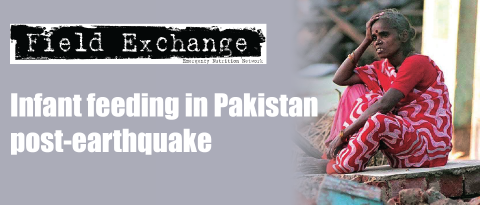Donor incapacity linked to aid ineffectiveness in Africa
Summary of published article1
Although the article below pertains to donors supporting development programmes, many of the issues have relevance to the humanitarian sector (Ed).
Will proposals to increase aid in order to achieve the Millennium Development Goals be hampered by donor capacity? Focussing on sub-saharan Africa, this is the subject of a recent article published in IDS Bulletin. The authors assert that donors probably do not have the necessary organisational structures and procedures, knowledge, skills and attitudes to deal with proposed increases in aid. A number of aspects in the design and implementation of donor-funded interventions are considered to be critical. These include the following;
Local ownership and commitment
The importance of ownership is widely acknowledged by donors as essential to the success and sustainability of development efforts. However, in reality donors still tend to dominate the project cycle and pay inadequate attention to the preferences of the government or project beneficiaries. There are two main reasons for this; insufficient understanding of the policy environment in the recipient country and pressure on donor agencies to spend money as a result of spending targets. These targets are often set for political reasons rather than developmental ones, due to competition between donors, and/or the need for individual agency staff to justify their own existence.
Appropriate interventions Africa's history is littered with examples of inappropriate development interventions introduced by 'outsiders'. For example, the British colonial government's notorious groundnut scheme in the 1950s and the more recent World Bank's structural adjustment programmes in the 1980s. The reasons why donors continue to introduce inappropriate solutions include the fact that most of Africa's problems are complex and there are no easy or obvious solutions. Meanwhile, current aid discourse is generally characterised by the constant invention of new solutions and fashions, which displace the previous ones before the latter have been properly tested. Moreover, there is a mistaken tendency to assume that solutions are universally applicable - the 'one size fits all' approach.
Organisational structures and procedures
Donors have their own procedures for designing, approving, monitoring and evaluating the activities that they fund. These procedures inevitably differ from those of recipient organisations. Officials in the recipient organisation thus have to expend much time and effort learning and following the required procedures. In many cases, donors also require the establishment of special organisational units to implement 'their' interventions. The impact of these parallel structures is even more damaging in diverting time and effort from existing structures and may actually undermine them. The special units offer higher salaries and better working conditions than the existing organisations, and so poach the latter's most capable staff. A vicious cycle of institutional degradation ensues. Ironically, such structures are most common in countries where government institutions are weakest. The problem has been recognised by some donors and there are some relatively positive experiences from which lessons may be drawn, e.g. establishing local government capacity- building projects in Zambia, Zimbabwe and Ethiopia. The recent trend among many donors to move from individual projects to sector-wide approaches, poverty reduction support programmes and, more recently, general budget support, should, in theory, reduce the problem.
Quality of technical expertise
The quality of donor expertise in sub-Saharan Africa has deteriorated over the past 25 years. The most important reason for this is that aid agencies now contract out much of their work to private consultants. Whereas consultants were previously used mainly to provide an independent view in evaluations, they are now being asked to do everything.
This practice, which is characteristic not just of aid management but also of current public management practice in general, creates two major problems. First, knowledge and expertise is no longer accumulated in the agencies themselves but in the consultants. Second, the procedures by which consultants are hired, especially the prolonged process of competitive bidding, makes it very difficult to get the right person in the right place at the right time.
The authors conclude that in order to improve aid effectiveness donors must;
- Support only those interventions that demonstrate genuine recipient ownership and commitment.
- Promote interventions that are appropriate to the local environment.
- Work through the recipient country's existing management structure and procedures rather than their own.
- Enhance their technical capacity to do the above by strengthening in-house knowledge and expertise and reducing the use of consultants.
However, there are considerable impediments. Aid agencies are constrained by the organisational structures and procedures of their own governments, the need to be accountable to these governments and ultimately to the taxpayers, and by the non-humanitarian motives for providing aid. Moreover, and probably most important, there are many people with vested interests in the existing systems - including not only aid officials and consultants from the donor countries, but also many people in recipient countries who benefit personally from current ineffective practices.
1Conyer D and Mellors R (2005). Aid ineffectiveness in sub- Saharan Africa: The problem of donor capacity. IDS Bulletin, Vol 36, No 3, September 2005, pp 83-88
Imported from FEX website


